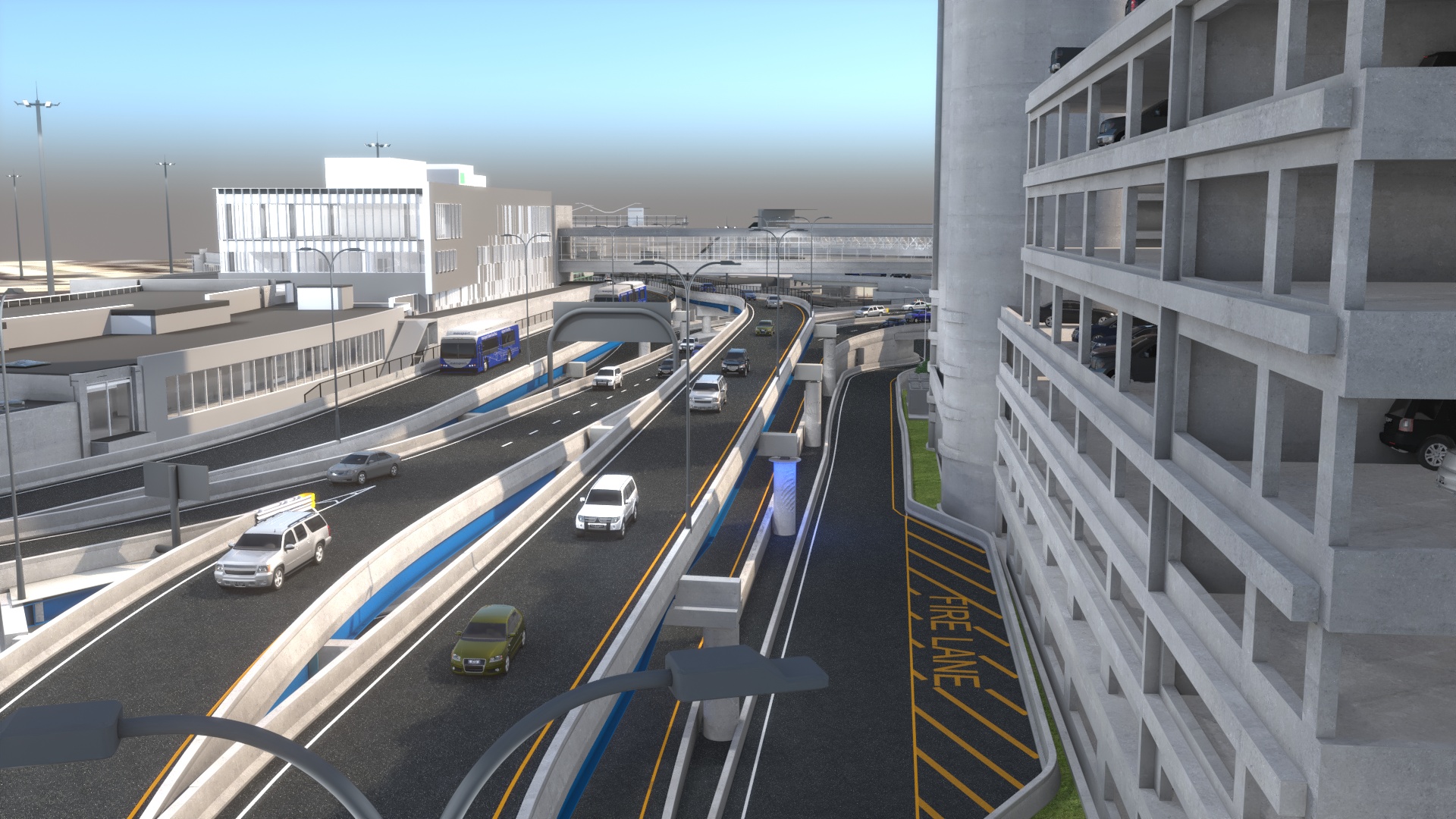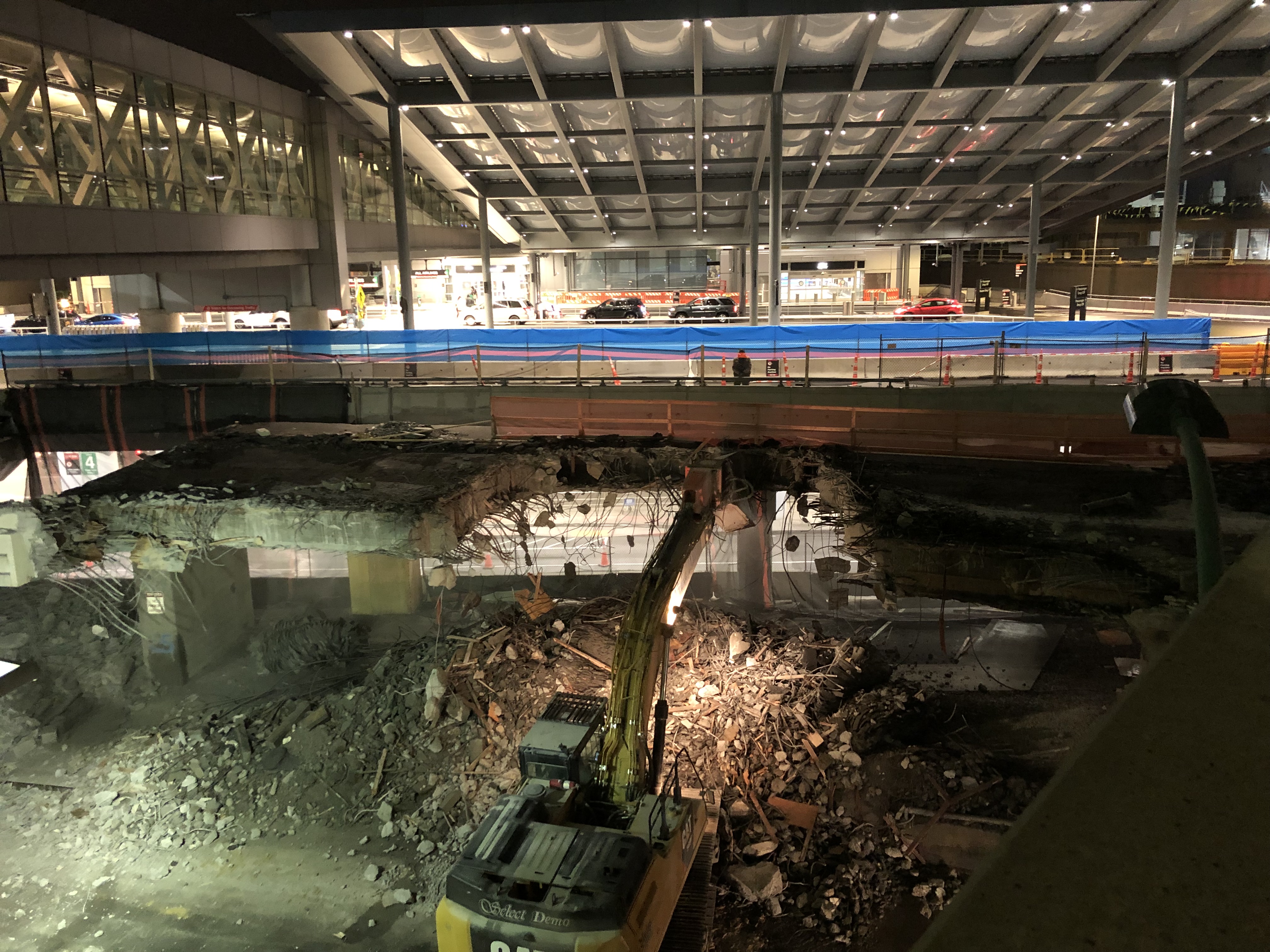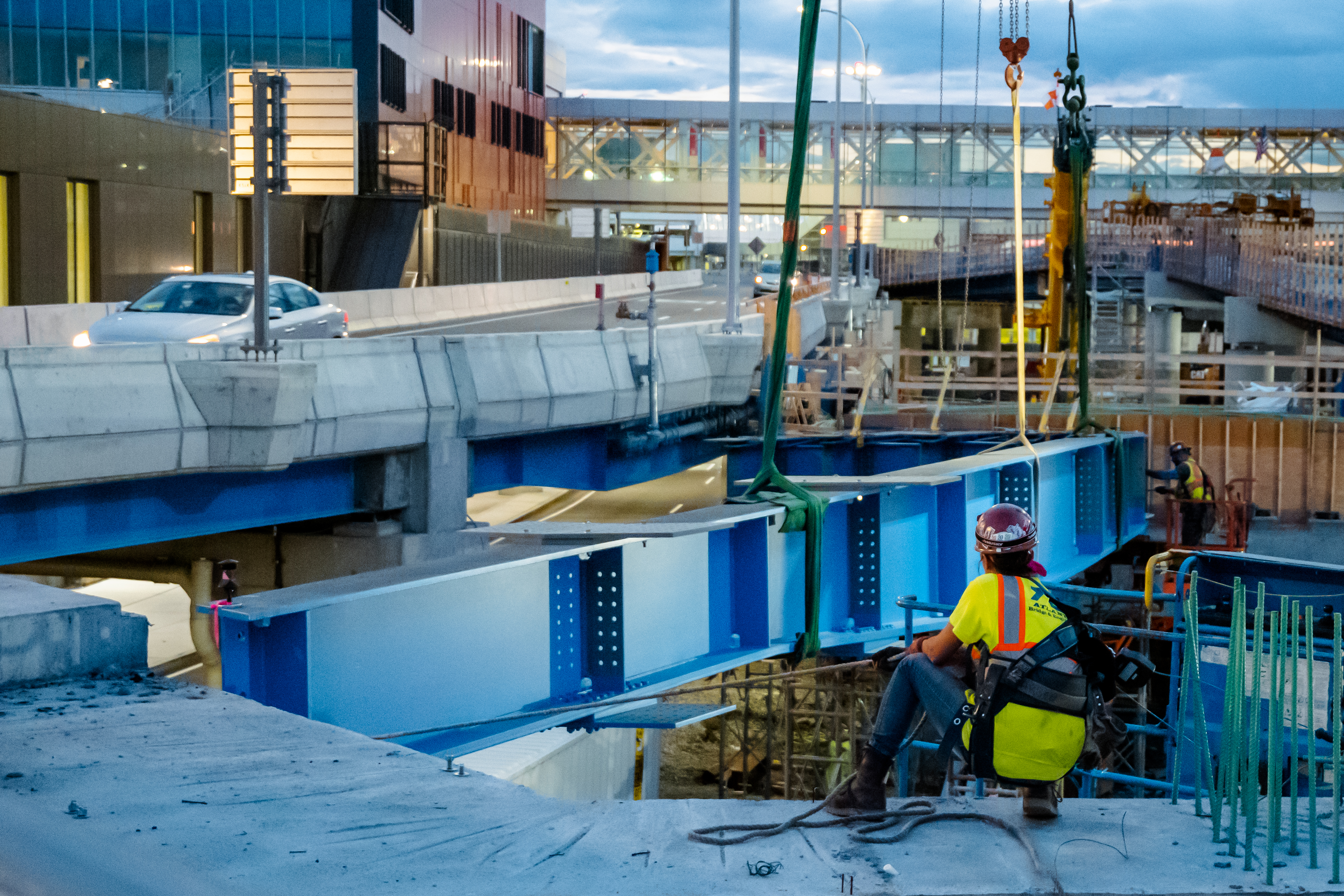Enhancing Transportation Infrastructure at Boston's Gateway to the World
By Conor Hoey, EIT, Structural Engineer, Stantec
Posted
in
Featured Projects



Introduction
Logan International Airport previously utilized a 1960’s-era two-level roadway system to separate vehicle traffic carrying Arriving and Departing passengers. Prior to the start of the L1332 B-C Terminal Roadways program, both levels utilized a singular roadway corridor with individual exits and entrances for each terminal. The weaving maneuvers along the short distances between terminals combined with increased passenger volume resulted in heavy traffic congestion during peak periods. This congestion combined with increasing need for maintenance and repair of the existing infrastructure defined the purpose and need for the seven construction contracts within the $200M Terminal Roadways program procured by the Massachusetts Port Authority (Massport), with the assistance of the prime engineering consultant, Stantec.
Construction began in the fall of 2018 with the initial contract in the L1332 program and has been a continuous operation, with several different general contractors undertaking the various contracts, often sharing work zones with one another. Notice to Proceed on the final contract, “L1332-C4 Terminal C Main Roadways”, was issued in July of 2021. This $66M+ design-bid-build contract is being constructed by a joint venture of Bond Civil Utility & SPS New England (Bond/SPS JV).
L1332-C4 includes the construction of dedicated exits from Terminals B & C on both the Arrivals and Departures levels and the reconstruction of the primary Arrivals and Departures roadway corridors. To create the space required to construct the final configuration, the team had to complete the construction of a three-span temporary bridge, several temporary roadway alignments, and the demolition of the 1960’s concrete viaduct. This work created the space for the construction of three unique, curved, steel girder viaducts, a four-sided concrete underpass structure, MSE wall retained fill sections, and several at-grade surface roadways. These elements are interwoven together to build more than 5,000 feet of multi-lane roadway within a footprint that is approximately four acres in size. See Photo 1 for a rendering of the completed L1332 program.

Photo 1: Rendering of completed L1332 B-C Terminal Roadways program
Rising to the Challenge
With construction taking place within the limits of an active international airport, the maintenance of operations and limitation of traffic delays are critical for the contract’s success and represent major challenges for the construction team. To share real-time construction updates, the team launched the “Logan Forward Campaign” consisting of a website, video messages in terminal monitors, text and email notifications, and consistent construction banners. Beyond public relations, internal collaboration has been critical to the team’s success in rising to the challenge. The team holds weekly Work Plan Meetings with representatives from Massport Capital Programs, Stantec Design & Resident Engineering Teams, Bond/SPS JV, and stakeholders from several Massport departments with the goal of limiting impact to the airport community while still efficiently achieving construction objectives.
To enhance this collaboration, the construction team has made use of the federated 3D model, developed by Stantec during the design phase. Developed to a Level of Development (LOD) of 200, the federated model combines all of L1332’s various disciplines into one cohesive environment. This tool allows engineering and construction teams in the field to visualize layouts, obstructions, and potential constructability challenges before sticking shovels in the ground. During design, individual models were built for each contract then federated into one cohesive model for the entire program, allowing the design team to analyze the program holistically. Due to the sequential nature of the program’s construction contracts, the federated model was consistently updated with as-built data provided from the field and was used to inform design decisions for contracts that had not yet been released for construction. These models have also been used to help visually communicate operational impacts from construction to stakeholders and analyze alternative phasing strategies. The continued application of this technology cohesively through design and into construction on L1332-C4 is innovative and has generated major value for Massport and the rest of the program team.
Using both the Work Plan Meetings and the federated 3D models, the team was able to successfully complete one of the highest-risk and most invasive phases of the contract – the demolition of the 1960’s viaduct structure. With all sixteen remaining spans scheduled to be demolished within extremely close quarters, the demolition of this structure required extensive planning. Each phase of demolition came with its own geometric challenges. Oftentimes, the structure to be demolished was directly adjacent to active vehicular traffic or spanned over critical infrastructure to remain in the final condition. In these situations, the team directly engaged the specialty demolition subcontractor to participate in planning discussions ensuring all parties involved in the work understood the operation’s constraints. In all situations, the team was able to develop demolition and traffic management plans that prioritized safety and operational maintenance to accomplish the task at hand. Demolition of the 1960’s viaduct was safely and successfully completed in May of 2022. See Photo 2 for a closer look at the demolition operation’s geometric constraints.

Photo 2: Demolition of the existing 1960's viaduct structure.
Following the completion of the viaduct demolition, the construction team then set its sights on bridge steel erection and concrete deck installation. With demolition completed in the spring of 2022, the sprint was on to complete thirteen of the fourteen bridge spans before the end of the 2022 construction season. To accomplish this, Bond/SPS JV implemented staggered shifts to allow several crews to work in the same area in the same day, without simultaneously working on top of each other. These coordinated shifts made it possible for utility crews to safely install subsurface systems during the day while ironworkers erected steel bridge girders at night. Steel erection was started adjacent to Terminal B in late June of 2022 and the final girders at Terminal C were set at the end of October in the same year. This then gave way to bridge deck crews that were able to complete all of the composite bridge decks prior to the end of 2022. See Photo 3 for a glimpse at the bridge steel erection operation.

Photo 3: Erection of curved steel bridge girders.
The Final Push
With the demolition of the 1960’s viaduct and the construction of all but one of the permanent bridge spans complete, the team has set its sights on substantial completion at the end of 2023. Construction of the four-sided concrete underpass structure and the accompanying retaining walls is well under way, which will facilitate the construction of the primary Arrivals and Departures corridors in the coming months. With the primary corridors open to traffic, the construction team will shift its focus to the erection of the final bridge span. This span consists of prefabricated bridge units (PBU’s) and will be installed using accelerated bridge construction techniques due to its proximity directly below an existing pedestrian walkway. 2023 also includes the completion of the complex fire suppression dry standpipe system, at-grade roadways, and foamed glass aggregate fill sections.
The L1332 B-C Terminal Roadways program has been a major undertaking by Massport to ensure the longevity of one of its most critical assets culminating with the successful delivery of the final phase L1332-C4 contract. Through innovation and true partnership between the client, the engineer, and the contractor, the team has been able to remain on schedule and meet Massport’s conditions of satisfaction, all while delivering a high-quality passenger experience for the traveling public. With the completion of this program, Boston’s gateway to the world will continue to be a powerful engine for one of the nation’s great cities for many years to come.
